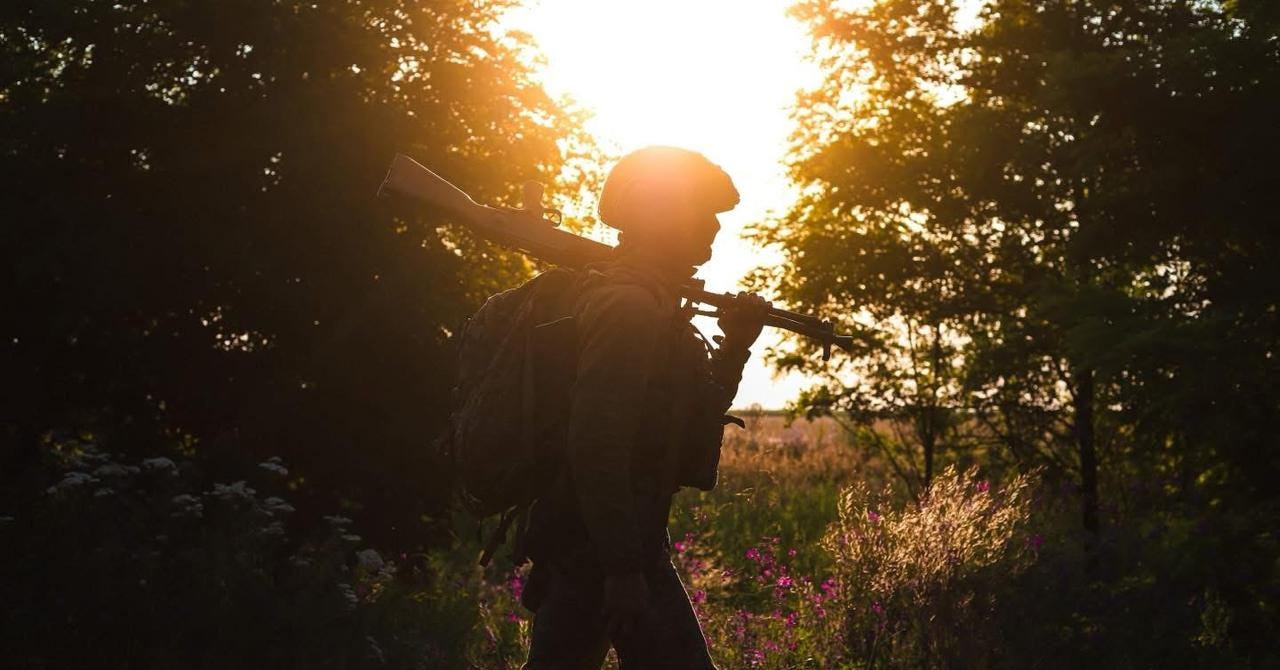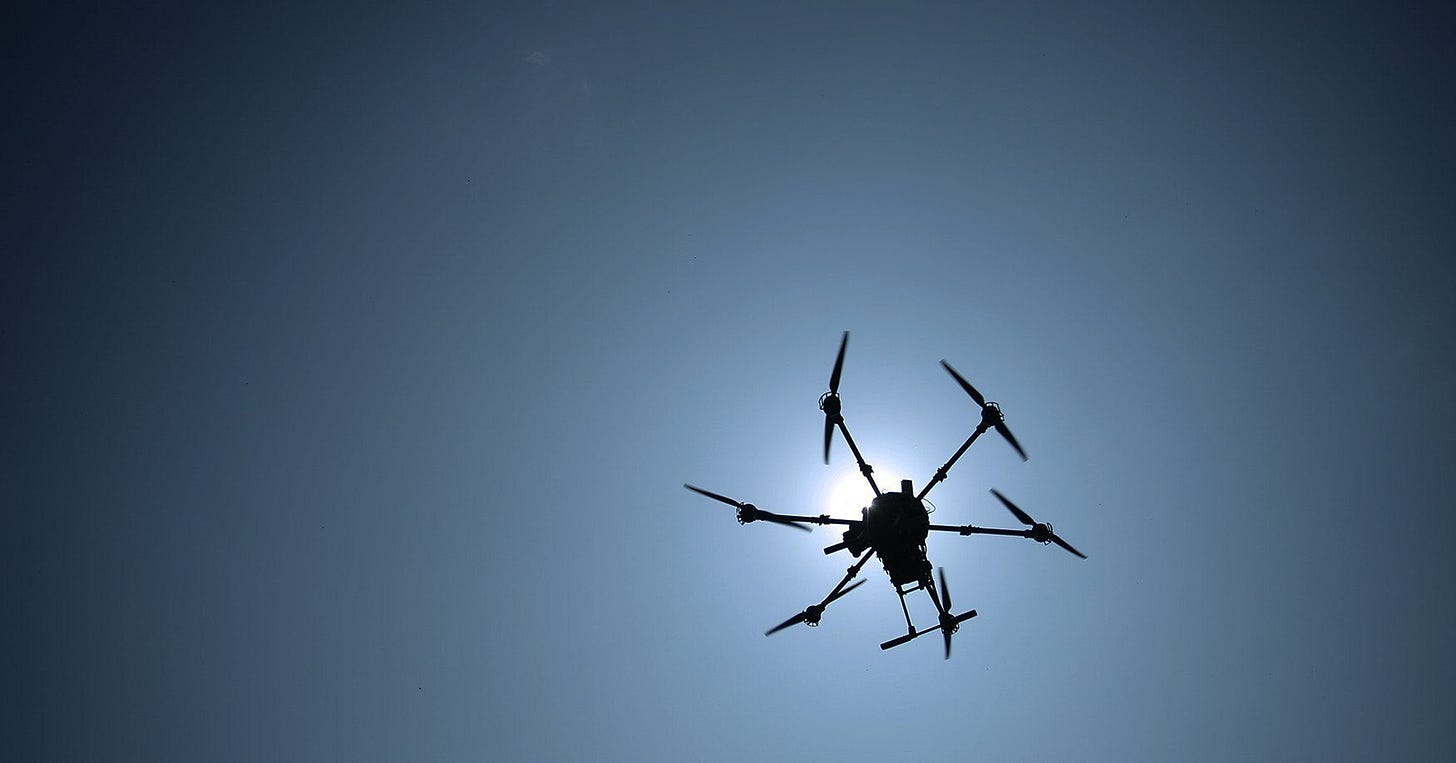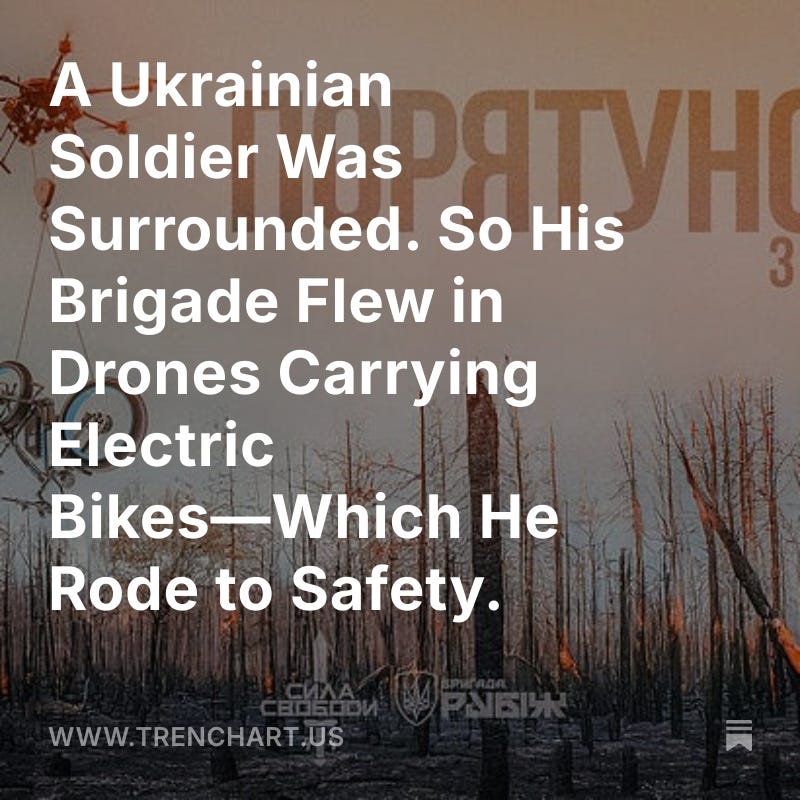Terrified & Alone, Ukraine's Few Infantry Mostly Spot Targets for Drones
Kyiv needs another 100,000 trained infantry, fast
Not too long ago, Ukraine’s drones spotted targets for the infantry. Now the relationship is reversed: all along the 700-mile front line of Russia’s wider war on Ukraine, the infantry’s job is to spot targets for the drones.
That’s the conclusion analysts Rob Lee and Michael Kofman reached after a recent trip to Ukraine. Lee and Kofman were guests on War on the Rocks’ podcast. The pro-Ukraine Conflict Intelligence Team helpfully summarized the analysts’ comments—and offered some helpful context.
According to Lee and Kofman, there are as few as six Ukrainian infantry per kilometer, or .6 mile, of front line in some sectors. Normally, a full battalion with several hundred troops would hold a kilometer-wide sector.
The “empty” front line is a function of a desperate infantry shortage in the roughly million-person Ukrainian armed forces. Kyiv’s roughly 130 ground combat brigades are, altogether, short around 100,000 trained infantry. It’s not a stretch to claim Ukraine has half the infantry it needs.
“This severe shortage of infantry is a key factor behind the high sparsity of the front line,” CIT noted—and it’s why small Russian assault groups marching on foot or riding on motorcycles can penetrate the front line and wander around miles inside what should be Ukrainian territory.
If those assault group go to ground in a basement or a vacant Ukrainian fighting position, they could secure a lodgement that, reinforced by additional Russians, could turn into a true penetration of Ukrainian defenses.
If you’re wondering how Russian forces recently extended their pincer north of the fortress city of Pokrovsk in eastern Ukraine while also infiltrating the city’s southern neighborhoods—that’s how. They rode or walked right past the over-extended Ukrainian infantry … and then scurried underground.
Drones-first strategy
The few-and-far-between Ukrainian infantry are no longer the main combat forces in Ukraine’s defensive system. CIT cited Lee explaining how “small Ukrainian infantry units are often ordered not to engage in fighting with passing Russian soldiers to keep these positions as concealed as possible.”
“Instead,” CIT added, “they are instructed to relay information about enemy movements to drone operators.”
On one hand, this tactic helps preserve hidden positions for future engagements and prevents their destruction. On the other hand, it increases the workload on UAV operators, who now must not only perform their regular tasks but also track and eliminate enemy ‘sabotage and reconnaissance groups,’ as they are called in Ukrainian sources, that manage to infiltrate [as far as 3 miles] behind Ukrainian lines due to infantry shortages.
Ukraine’s drones, which local industry produces at a rate of several million per year, “have become the primary cause of daily front-line casualties, inflicting damage up to [nine miles] deep from the front line.” CIT reported.
The problem, of course, is that Russia also builds millions of drones a year—and has managed to form a few elite drone units who can match their Ukrainian counterparts strike for strike.
These units, including the famed Rubicon group, “focus on severing Ukrainian logistics using fiber-optic drones operating [12 to 16 miles] behind the front line, destroying Ukrainian drone operator positions and intercepting UAVs,” according to CIT.
“Overall, Russian drone forces are now significantly better organized” than they were just a year ago, CIT observed.
Ukraine still holds a drone edge over Russia, albeit a slight one. But the abundant drones belie a profound infantry shortage—one that is fast becoming an existential problem for Ukraine, if it isn’t already one.
Yes, Ukrainian drones intercept and kill many if not most Russian assault troops. But they don’t kill them all. And it only takes a few survivors, riding or walking right through the nearly deserted Ukrainian line, to find a below-ground lodgement for follow-on forces.
Ukraine needs more infantry. A lot more. And urgently.





So where's the hundred thousand going to come from? Ukraine's demographic pinch is well known but it sounds like that should now be ignored. If Russia can recruit a lot more than 100K, all of them destined for the meat grinder, it should be possible for Ukraine to do the same even if it means paying everyone on the frontline huge bonuses. They had better train them a lot better than the Russians do. It would be impossible to do worse.